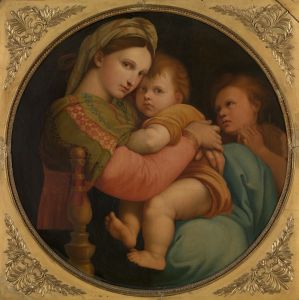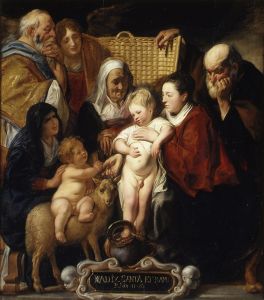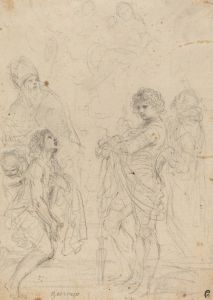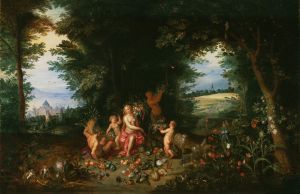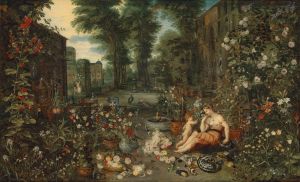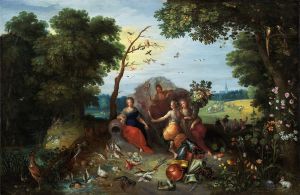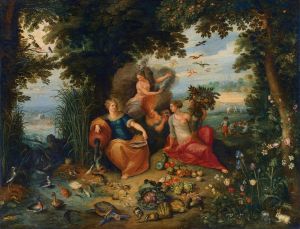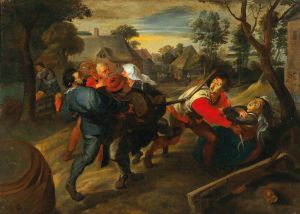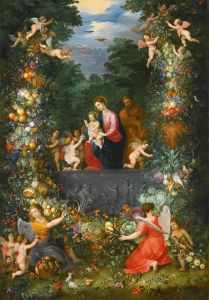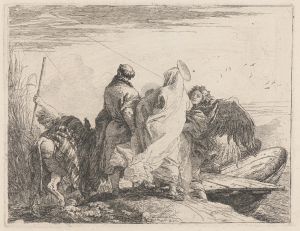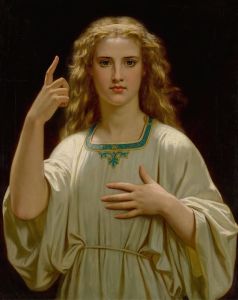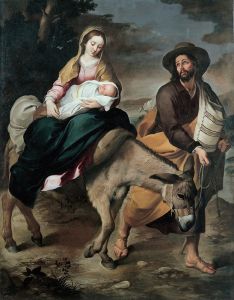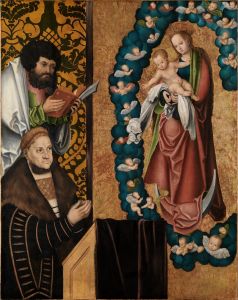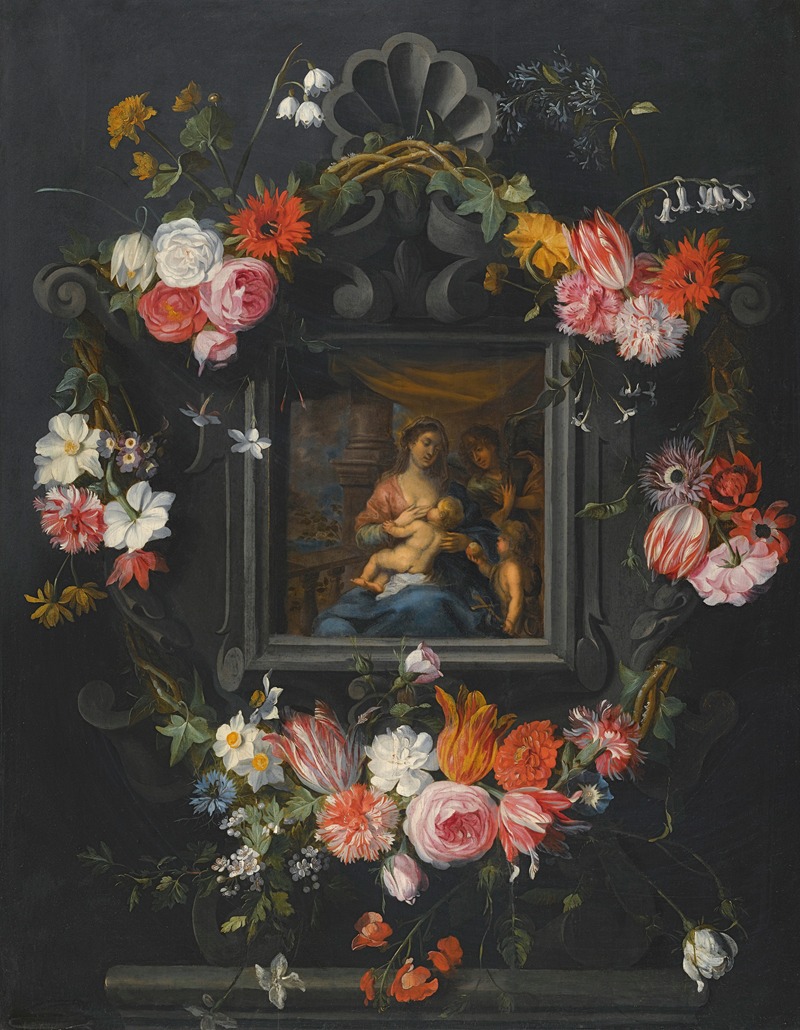
A Garland Of Flowers Surrounding The Virgin And Child
A hand-painted replica of Jan Brueghel the Younger’s masterpiece A Garland Of Flowers Surrounding The Virgin And Child, meticulously crafted by professional artists to capture the true essence of the original. Each piece is created with museum-quality canvas and rare mineral pigments, carefully painted by experienced artists with delicate brushstrokes and rich, layered colors to perfectly recreate the texture of the original artwork. Unlike machine-printed reproductions, this hand-painted version brings the painting to life, infused with the artist’s emotions and skill in every stroke. Whether for personal collection or home decoration, it instantly elevates the artistic atmosphere of any space.
"A Garland of Flowers Surrounding the Virgin and Child" is a notable painting by Jan Brueghel the Younger, a prominent Flemish Baroque painter known for his detailed and vibrant works. Born in 1601 in Antwerp, Jan Brueghel the Younger was the son of Jan Brueghel the Elder, a renowned painter himself, and the grandson of Pieter Bruegel the Elder, one of the most significant artists of the Northern Renaissance. This lineage placed Jan Brueghel the Younger in a family with a rich artistic heritage, which greatly influenced his career and style.
The painting "A Garland of Flowers Surrounding the Virgin and Child" exemplifies the collaborative nature of Flemish art during the Baroque period. It is a part of a genre known as "garland paintings," which typically feature a central religious or mythological figure surrounded by a rich and detailed floral wreath. This genre was popularized in the early 17th century, particularly in Antwerp, and often involved collaboration between artists specializing in different subjects. In this case, Jan Brueghel the Younger was known for his expertise in painting flowers and still lifes, while the central figures of the Virgin and Child were often painted by another artist, although specific collaborations for this piece are not clearly documented.
The composition of the painting is characteristic of the Baroque style, with its emphasis on dramatic contrasts, rich colors, and intricate details. The garland itself is composed of a variety of flowers, meticulously rendered to showcase their vibrant colors and delicate textures. This attention to detail reflects the influence of botanical studies and the growing interest in the natural world during this period. The flowers are arranged in a circular form, creating a sense of harmony and framing the central figures of the Virgin Mary and the Christ Child.
The Virgin and Child are depicted with a sense of serenity and grace, a common theme in religious art of the time. The Virgin Mary is often shown in a contemplative pose, while the Christ Child may be depicted reaching out or interacting with the surrounding flowers, symbolizing the connection between the divine and the natural world. This interplay between the sacred and the earthly is a hallmark of Baroque religious art, aiming to evoke emotional engagement and spiritual reflection in the viewer.
Jan Brueghel the Younger's work is noted for its technical precision and the lush, almost tactile quality of his floral arrangements. His ability to capture the beauty and diversity of nature made him a sought-after artist for both religious and secular commissions. "A Garland of Flowers Surrounding the Virgin and Child" is a testament to his skill and the collaborative spirit of the Flemish Baroque tradition, where artists combined their talents to create works that were both visually stunning and spiritually resonant.
This painting, like many of Brueghel's works, would have been appreciated not only for its aesthetic qualities but also for its symbolic meanings. Flowers in art often carry specific connotations, such as purity, transience, and the divine, which would have been well understood by contemporary audiences. Through this intricate interplay of imagery and symbolism, "A Garland of Flowers Surrounding the Virgin and Child" continues to be a significant example of Jan Brueghel the Younger's artistic legacy.





